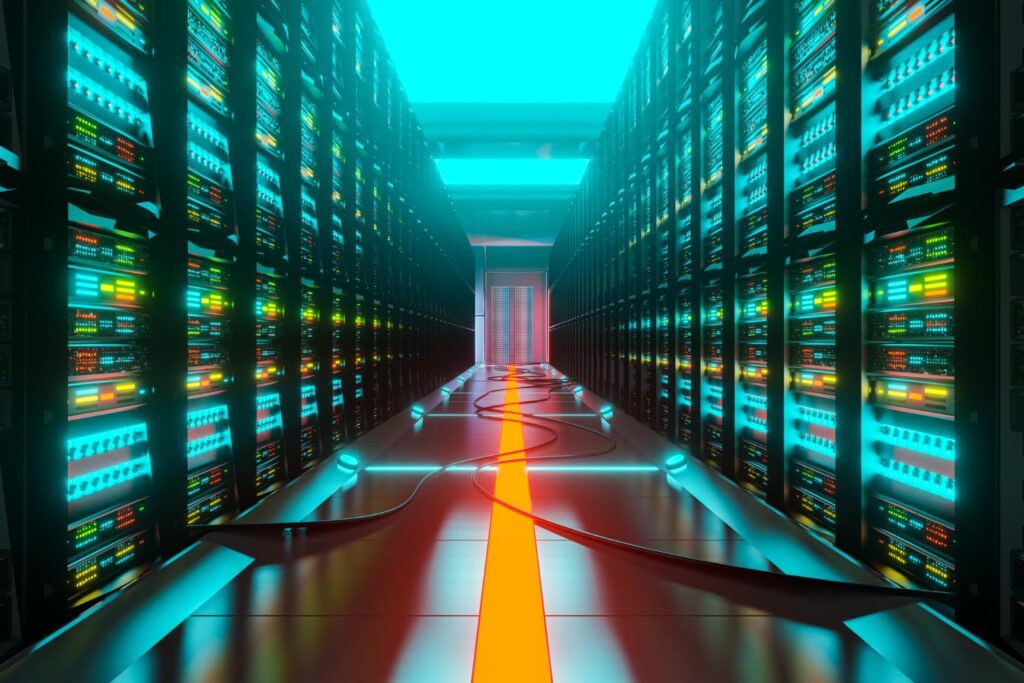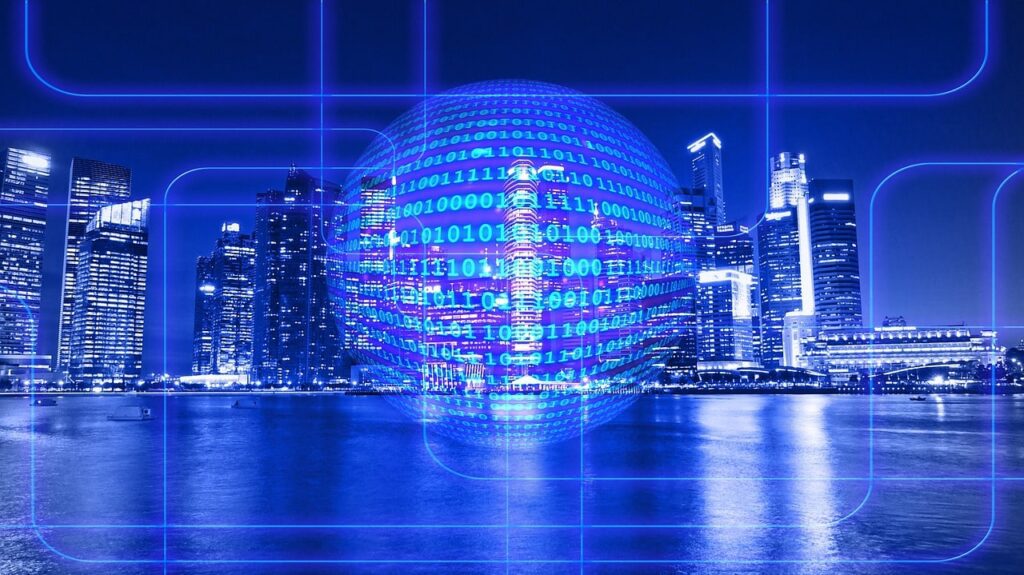Even With the Strongest IT Infrastructure, What Is Always the Weakest Link in a System?
A robust IT infrastructure is needed for any organization to operate efficiently and securely. However, even the most cutting-edge IT systems have vulnerabilities that can be exploited.
After all, it seems there is at least one weakest link in any IT infrastructure. Surprisingly, it may not relate to the technology itself, but to the human element. Next, we’ll explore the key components of strong IT infrastructure and how human error undermines even the most resilient tech.
What is the Strongest IT Infrastructure?

A strong IT infrastructure has several pillars that support the overall operations:
- It must have a fast and reliable network with ample bandwidth, multiple redundancies to prevent outages, and top-tier cybersecurity solutions.
- The hardware and devices connected to the network also need to be modern, standardized across the organization, and able to handle intensive workloads without performance issues.
- Critical systems require backup power sources like generators or uninterruptible power supplies to prevent downtime in case of electrical failure.
- Comprehensive backup and recovery systems are essential in case of outages or data loss to get systems back up quickly with minimal disruption.
- Automation and virtualization optimize workflows and resource utilization for efficient operations.
- Most importantly, skilled IT professionals actively monitor, maintain, and upgrade the infrastructure to provide the human oversight needed to keep everything running smoothly 24/7.
- An agile infrastructure can scale and adapt quickly to evolving needs and threats.
The Weakest Link in Any IT System

This weakest link in this robust chain isn’t the technology itself, but rather the people using it. Human errors, whether intentional or accidental, can single-handedly undercut even the strongest IT infrastructures. Even strict protocols and controls cannot completely account for lapses in human judgment.
For example, complex password policies aim to increase security but often backfire when users inevitably write them down or reuse passwords across systems for convenience.
Company devices granted unrestricted network access are vulnerable when employees accidentally install unauthorized software that introduces malware or fall for phishing scams, giving hackers a foothold.
Policies exist for access controls, encryption, and updating software for good reason. But they all fall apart when employees circumvent rules for convenience, disregard procedures, or simply make mistakes.
Furthermore, overconfidence in security measures may cause users to let their guard down, and that applies to IT infrastructure managers.
In the end, even the most vigilant IT teams cannot defend against careless or naive end users. For this reason, the unpredictable human element is the most unstable variable within IT systems.
IT Infrastructure Vulnerabilities
Beyond human error, some inherent vulnerabilities in IT infrastructure can be mitigated but not eliminated. Software will always harbor bugs and security flaws that get exploited.
Denial-of-service attacks can overwhelm servers and network capacity no matter how robust they seem. Physical damage from natural disasters can wipe out entire data centers despite precautions. Insider threats from disgruntled employees are also a lurking concern.
Poor network segmentation allows threats to spread between systems once a foothold is gained. Legacy hardware lacks updated security patches to fix newly discovered holes.
Default passwords on Internet-connected devices are an easy target for automated attacks. Failure to encrypt data opens the door to leaks and breaches when devices are lost or stolen. Outdated disaster recovery plans may also prove inadequate when actually needed to recover from incidents.
The list of risks goes on. For these reasons, continuous monitoring, testing, and upgrades are imperative even with the strongest infrastructures in place. Assuming any IT system is 100% secure is asking for trouble.
There will always be unknown gaps and next-generation threats emerging. Staying on guard through ongoing vigilance is a key step for everyone in the system. In short, the vulnerabilities may include:
- Software bugs and security flaws
- Denial-of-service attacks
- Physical damage from natural disasters
- Insider threats from disgruntled employees
- Poor network segmentation allows threats to spread
- Legacy hardware lacks updated security patches
- Default passwords on Internet-connected devices
- Unencrypted data and devices vulnerable to theft
- Outdated disaster recovery plans
- Creating Strong IT Infrastructure
Strengthening the Weakest Link in the System
Organizations can minimize vulnerabilities through several best practices:
- Implement the principle of least privilege to strictly limit access permissions to only essential users and systems. This contains damage from both human errors and malicious actors by reducing their reach into networks.
- Enforce strong, frequently changed passwords across the organization per modern guidelines.
- Educate employees on evolving security risks through mandatory cybersecurity training.
- Perform periodic mock phishing attacks to identify weak spots and improve awareness.
- Discourage poor practices like password reuse and unauthorized file sharing that bypass official channels.
- Segment networks to isolate mission-critical systems and data from general access.
- Deploy proven technologies like firewalls, VPNs, antivirus software, and encryption wherever applicable.
- Create redundancies for power, internet, and critical systems to prevent single points of failure.
- Document detailed incident response and disaster recovery plans. Test them regularly.
- Continuously patch, update, and replace outdated software and hardware.
Final Thought
A strong IT infrastructure requires many components to work in harmony. Cutting-edge technology and policies are useless without vigilant human monitoring and supporting systems 24/7.
Organizations must invest equally in responsible tech and developing security-focused cultures. With balanced technology and training, companies can mitigate risk while leveraging IT to drive innovation and growth.
Denarjes helps businesses and startups implement the best IT infrastructure components for better security and efficiency. You can contact us now to learn more about our services.
Frequently Asked Questions
What Are Some Examples of Human Errors That Create Vulnerabilities in IT Systems?
Common mistakes like poor passwords, failing to update software, circumventing security policies for convenience, failing for phishing scams, and losing company devices can open doors to breaches.
How Can Companies Promote More Security-Conscious Behavior Among Employees?
This can be done through cybersecurity training, running phishing simulation tests, enforcing strong passwords, limiting access privileges, and establishing clear protocols with consequences for violations.
What Are the Most Important Elements of a Robust IT Infrastructure?
These elements may include fast, redundant networks; modern hardware/software; backup power sources; effective access controls; and comprehensive monitoring and incident response capabilities.
Why Is Ongoing Maintenance and Upgrading So Important for Infrastructure?
All systems have inherent flaws and vulnerabilities that vendors address over time. New threats also emerge constantly. Failure to patch and update regularly leaves needless security gaps.
How Does the Principle of Least Privilege Enhance Security?
By restricting access permissions to the minimum needed for each user or system to function. This contains damage from human errors or malicious actors by limiting their reach into networks. Excessive privileges create unnecessary risks.
What Should an Incident Response Plan Outline?
Procedures to detect, analyze, and contain breaches or outages. Communication protocols to notify relevant internal and external parties. Step-by-step processes to recover operations and data.

